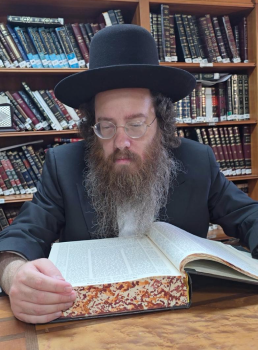Questions about the Wedding and Chuppah
Question
Shalom Uvracha,
I wanted to ask a few questions:
- What is the significance of the hinuma (the bridal veil) at the chuppah? (Aside from the halachic aspect of acquisition and the requirement for all forms of kinyan.) I’m curious about the deeper meaning. Someone told me it symbolizes that the bride follows her husband even when she doesn’t understand why. Is that true?
- What is the reason for escorting the groom with candles?
- How is a groom connected to the destruction of Jerusalem?
- Is it permitted to write love letters during the ten days before the wedding when the couple is not speaking or meeting?
- Between the engagement and the wedding, if the groom wants to go to a restaurant that doesn’t necessarily have the same kashrut standard as the bride, is it permissible for the bride to eat there with him?
- What is the meaning behind the groom wearing a kittel at the chuppah? And if it’s related to the day of death, why would that be part of the wedding?
Thank you very much.
Answer
Shalom UvRacha,,
- I haven’t found that explanation in the classical sources—it sounds more like someone’s personal feeling.
The main idea is that it’s an act of kinyan (acquisition). Some explain that this shows she is now under his domain and a married woman, whose face is no longer to be looked at (see Ktav VeKabbalah on Bereishit 24:65 and She’erit Yaakov, Even HaEzer 18). Others explain that it symbolizes that she is now obligated in covering her hair, and by allowing the groom to cover her head, she is giving herself over to marriage (see Teshuvot VeHanhagot Vol. 3, 393; Shevet Shimon, Siman “Beit Mishteh” note 50). - There are several reasons for escorting the groom with candles:
- It alludes to the giving of the Torah, where “there were thunder and lightning,” so we come with lit candles (Teshuvot HaRashba Ketanot and Rokeach).
- It is a sign of joy (Tosafot and Ran on Sanhedrin; Rashi on Gittin).
- It’s a good omen that their home should be filled with light and happiness (Responsa Maharam Mintz).
- A groom is compared to a king, and kings are escorted with many candles (Midrash Talpiyot, entry "Chatan").
- The Maharal in Netivot Olam explains that this connection teaches that marriage is a 'Divine structure' —not merely a natural one—just like the rebuilding of Jerusalem.
- It is forbidden to write love letters before the wedding, since she is not yet his wife.
- They should eat at a place acceptable to both of them. After the wedding, they can consult a rabbi knowledgeable in kashrut to clarify which certifications are reliable.
- a. To inspire the groom to repent, so that his sins will be whitened like the garment.
b. To remind him of the day of death.
c. To awaken him to repentance on this day, when his sins can be forgiven.
d. To show that his sins have been forgiven.
Regarding the reason of remembering the day of death—it is to ensure the joy is appropriate, as it says וגילו ברעדה - “Rejoice with trembling.”
Also, because on this day the sins of the bride and groom are forgiven—if they repent.
Comments
Have an additional question on this topic or need clarification? Leave your comment below. (Please note that the comment will not be published but will be sent directly to the answering Rabbi for review and a private response)
